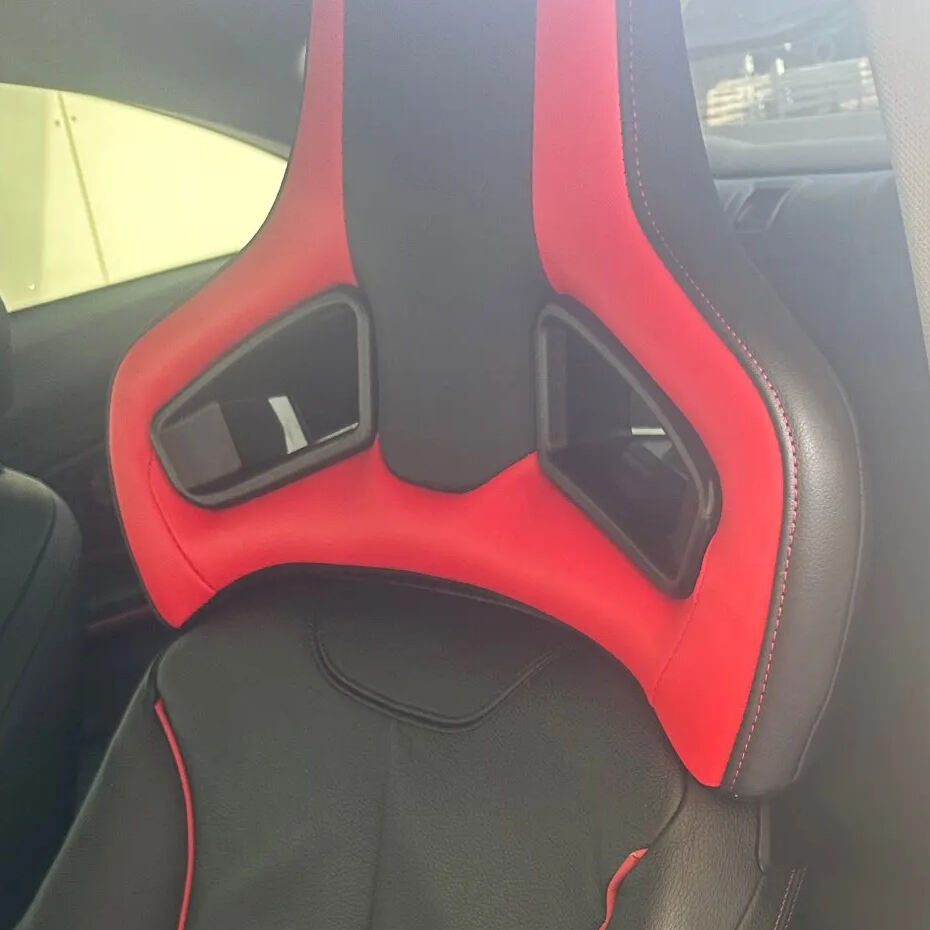Understanding the Evolution of High-Performance Automotive Seating
Racing seats have become an integral component of performance vehicles, transforming from basic bucket seats into highly engineered pieces of safety equipment. These specialized seats represent the perfect fusion of advanced materials, ergonomic design, and performance-oriented features that enhance both driver control and protection. Today's racing seats integrate decades of motorsport experience with cutting-edge technology, delivering optimal support for high-performance driving scenarios.
Modern racing seats differ significantly from standard car seats in their construction, materials, and overall design philosophy. While conventional seats prioritize comfort for daily driving, racing seats focus on maintaining driver position during high-speed maneuvers, reducing fatigue during extended track sessions, and providing crucial protection in extreme situations.
Core Design Elements of Premium Racing Seats
Advanced Materials and Construction
The foundation of superior racing seats lies in their materials. Carbon fiber, fiberglass composites, and aerospace-grade aluminum form the rigid shell structure, offering an optimal strength-to-weight ratio. These materials ensure maximum structural integrity while keeping the seat lightweight - a crucial factor in performance vehicles where every pound matters.
Modern racing seats utilize multi-layer construction techniques, combining different densities of foam padding with fire-resistant materials. The outer shell provides impact protection, while strategically placed padding offers comfort without compromising the seat's primary function of keeping the driver securely positioned.
Ergonomic Contours and Support Features
The distinctive deep-bucket design of racing seats serves a specific purpose - to hold the driver firmly in place during high-g cornering, acceleration, and braking. Extended side bolsters cradle the torso and thighs, while shoulder supports prevent lateral movement during aggressive maneuvers. These ergonomic features work together to maintain optimal driving position without requiring constant muscular tension from the driver.
Strategic placement of lumbar support and thigh bolsters helps maintain proper posture throughout long driving sessions. This reduces driver fatigue and enhances control inputs, ultimately contributing to better vehicle handling and faster lap times.
Performance Benefits and Safety Features
Enhanced Driver Control and Feedback
Racing seats significantly improve the connection between driver and vehicle. By maintaining a fixed position relative to the controls, drivers can execute precise inputs with greater consistency. The rigid mounting and secure positioning allow for better feedback from the chassis, helping drivers better interpret the vehicle's behavior at the limits of adhesion.
The reduced movement in the seat also means less energy wasted on maintaining position, allowing drivers to focus entirely on vehicle control and track awareness. This enhanced connection proves particularly valuable during high-speed cornering and sudden directional changes.
Integrated Safety Systems
Modern racing seats incorporate multiple safety features that exceed standard automotive seating requirements. Side-impact protection is built into the shell design, while strategic reinforcement zones help dissipate crash energy. Many racing seats also feature integrated harness guides for proper restraint positioning, ensuring maximum effectiveness of safety systems.
Fire resistance is another crucial safety aspect, with many racing seats utilizing materials that meet or exceed FIA standards for flame retardancy. This protection extends to both the structural components and the comfort padding, providing comprehensive safety coverage.
Installation and Fitment Considerations
Mounting Systems and Compatibility
Proper installation of racing seats requires careful consideration of mounting points and bracket systems. Custom brackets often prove necessary to achieve optimal positioning relative to the steering wheel and pedals. The mounting system must balance rigidity for performance with enough compliance to prevent chassis stress during impacts.
Vehicle-specific considerations include roll cage clearance, airbag compatibility, and maintaining access to essential controls and storage. Professional installation ensures these factors are properly addressed while maintaining the seat's safety characteristics.
Customization and Adjustment Options
While racing seats typically offer less adjustment than standard seats, available options must be carefully selected based on driver needs. Fixed-back seats provide maximum rigidity but require precise initial positioning. Adjustable versions offer some flexibility for different drivers while maintaining essential support characteristics.
Custom padding and sizing options ensure proper fit for different body types, crucial for both comfort and safety. Professional fitting services can help optimize seat selection and positioning for individual drivers and vehicles.
Maintenance and Long-Term Performance
Care Requirements
Racing seats require specific maintenance protocols to maintain their performance characteristics. Regular inspection of mounting hardware, shell integrity, and padding condition helps ensure continued safety and functionality. Cleaning should follow manufacturer guidelines to prevent material degradation.
Performance-oriented seats may require periodic reassessment of fit and position, particularly in vehicles used for both track and street driving. Professional inspection can identify wear patterns or structural issues before they compromise safety.
Longevity and Replacement Guidelines
Understanding the lifespan of racing seats helps maintain optimal performance and safety. Most manufacturers recommend replacement schedules based on usage patterns and exposure to environmental factors. Regular assessment of structural integrity, particularly after any significant impacts, proves essential for maintaining safety standards.
Documentation of installation dates, maintenance history, and any incident exposure helps track seat lifecycle and plan appropriate replacement timing. This proactive approach ensures continued performance benefits while maintaining safety standards.
Frequently Asked Questions
How do racing seats improve vehicle performance?
Racing seats enhance vehicle performance by providing superior driver support and control, reducing movement during high-performance driving, and improving feedback from the vehicle. The fixed position and rigid mounting help maintain consistent control inputs while reducing driver fatigue.
What materials are best for racing seats in daily-driven performance cars?
For daily-driven performance vehicles, hybrid materials combining lightweight composites with durable comfort padding offer the best balance. Look for seats featuring fiberglass or carbon fiber shells with high-density foam and moisture-resistant upholstery for longevity and comfort.
When should racing seats be replaced?
Racing seats should typically be replaced every 5-7 years under normal use, sooner if subjected to significant impacts or showing signs of structural wear. Regular inspection of mounting points, shell integrity, and padding condition helps determine optimal replacement timing.

